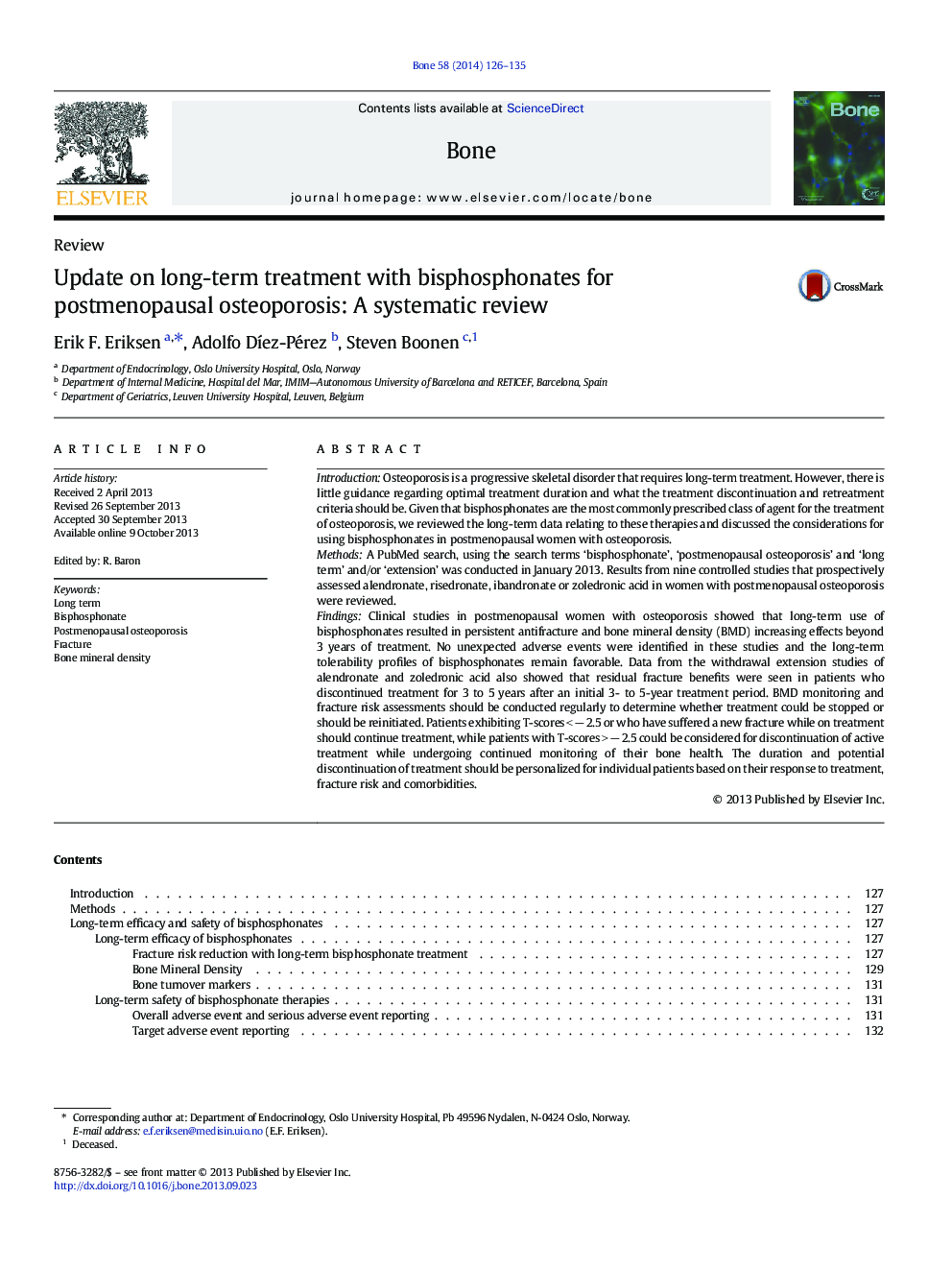| Article ID | Journal | Published Year | Pages | File Type |
|---|---|---|---|---|
| 5890463 | Bone | 2014 | 10 Pages |
Abstract
Clinical studies in postmenopausal women with osteoporosis showed that long-term use of bisphosphonates resulted in persistent antifracture and bone mineral density (BMD) increasing effects beyond 3 years of treatment. No unexpected adverse events were identified in these studies and the long-term tolerability profiles of bisphosphonates remain favorable. Data from the withdrawal extension studies of alendronate and zoledronic acid also showed that residual fracture benefits were seen in patients who discontinued treatment for 3 to 5 years after an initial 3- to 5-year treatment period. BMD monitoring and fracture risk assessments should be conducted regularly to determine whether treatment could be stopped or should be reinitiated. Patients exhibiting T-scores < â 2.5 or who have suffered a new fracture while on treatment should continue treatment, while patients with T-scores > â 2.5 could be considered for discontinuation of active treatment while undergoing continued monitoring of their bone health. The duration and potential discontinuation of treatment should be personalized for individual patients based on their response to treatment, fracture risk and comorbidities.
Related Topics
Life Sciences
Biochemistry, Genetics and Molecular Biology
Developmental Biology
Authors
Erik F. Eriksen, Adolfo DÃez-Pérez, Steven Boonen,
